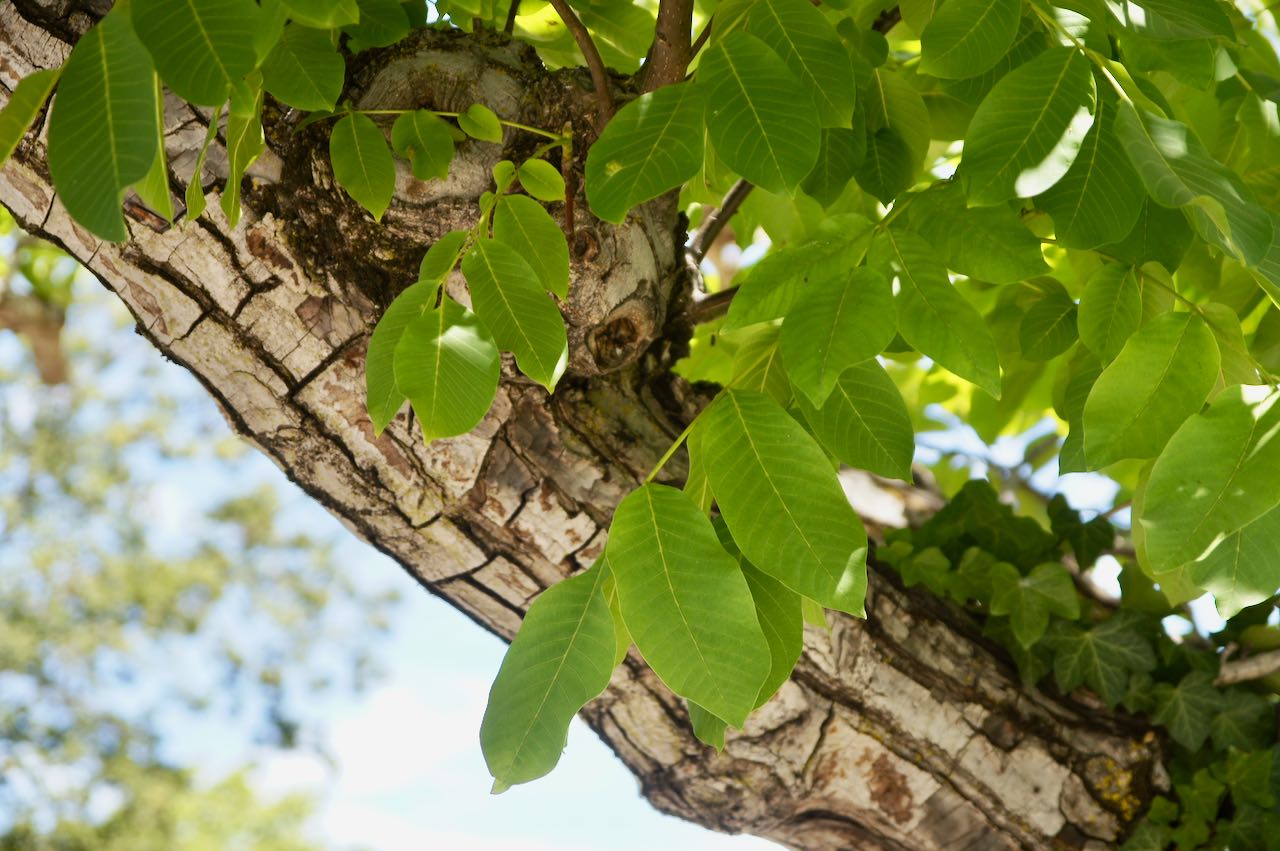Juglans regia
 walnut
walnut

The smooth gray bark and the seven ovate leaflets, the end one being the largest, distinguish the traditional walnut from the Californian walnut. In the walnut plantations, however, the line of demarcation can clearly be seen where the trees were grafted onto rootstocks of California black walnut. When the fruit is ripening you can eat the flesh outside the shell; in fact the shell itself and its contents are edible then, though sour. Heavy crops of excellent edible nuts are produced but they are a favorite with the squirrels and you have to move fast to compete with them. Generally speaking, you cannot move that fast. The wood is highly prized for objects that are still made of wood, pianos and gunstocks for example.
The Ju- stands for Jupiter and the glans is Latin for acorn. Evidently the English word gland refers to an anatomical object shaped like an acorn. The word cognate with nut in the following European languages is Nuss (German), noix (French), noce (Italian), nuez (Spanish), noz (Portuguese), all of which mean walnut unless otherwise specified. This must be telling us something about the ancestral European diet. Walnuts are nutritious, averaging over 6000 calories per kilogram, about the same as for almonds, Brazil nuts, cashews, hazelnuts, macadamias, and pecans. Yet in Great Britain the walnut was an immigrant, as witnessed by the prefix wal- meaning foreign; the name Wales imbeds the same root. The specific name regia (royal) harks back to the Greek for the nut. The term English walnut arises understandably from the fact that California has its own walnut, but the tree that bore the ancient nut of kings is not an English tree.
Several bushy walnuts are staggered on the west side of Campus Drive just south of Searsville Road. They are grafted on Northern California black walnut rootstock, which you can see sprouting vigorously from several of them. Near campus, a walnut stands at 2019 Harvard Street, on the left, and at 2075 Bowdoin Street, on the right of the house. Three walnuts and two Northern California black walnuts can be compared side by side in Menlo Park on Oak Avenue near Olive Street. Walnut Drive, Palo Alto, has two walnuts as street trees at the end near Embarcadero Road.
About this Entry: The main text of this entry is from the book Trees of Stanford and Environs, by Ronald Bracewell, published 2005. John Rawlings added the Harmony House location ca. 2006. Added Campus Dr at Searsville Rd, Harvard St, and Bowdoin St locations; removed mention of removed trees at Harmony House and pair at 712 Harvard Avenue, Menlo Park; all locations up to date (Jul 2023, SP).



